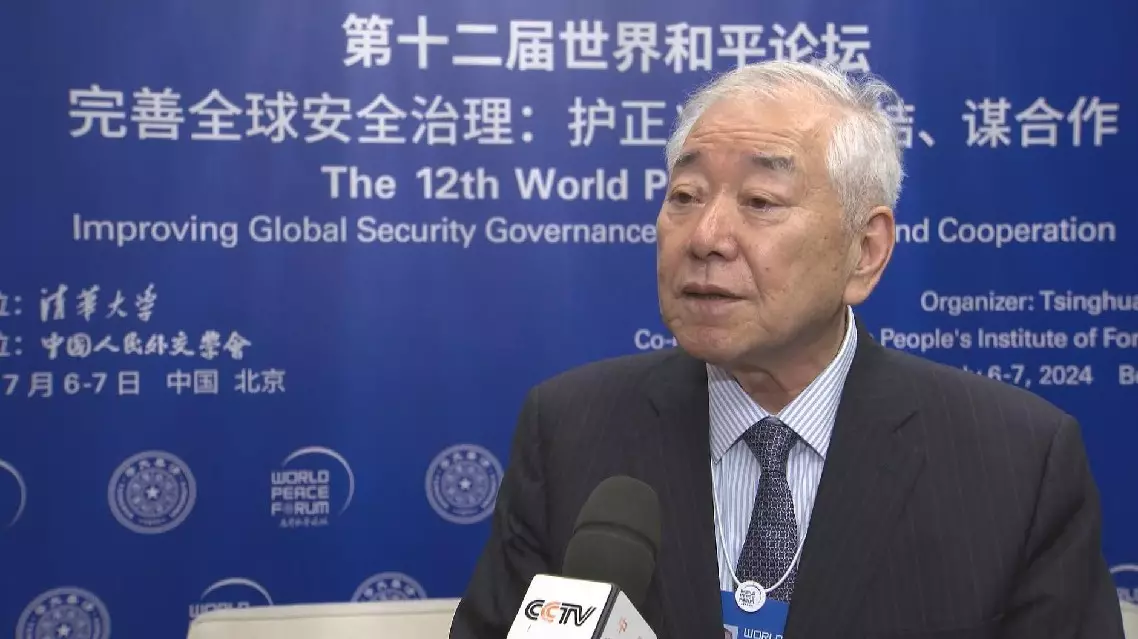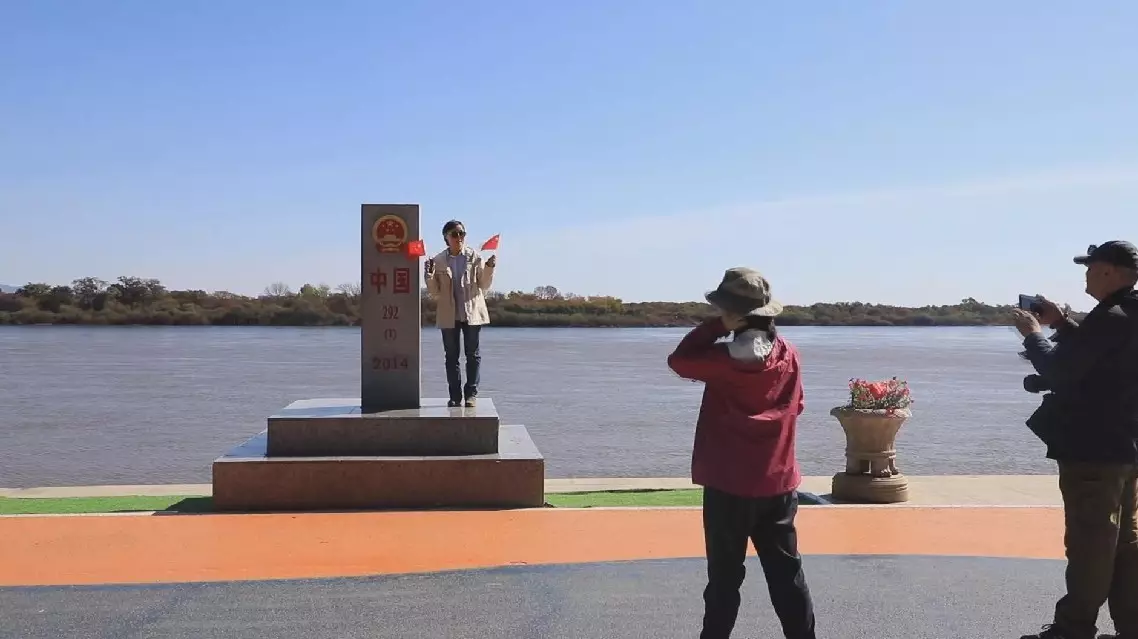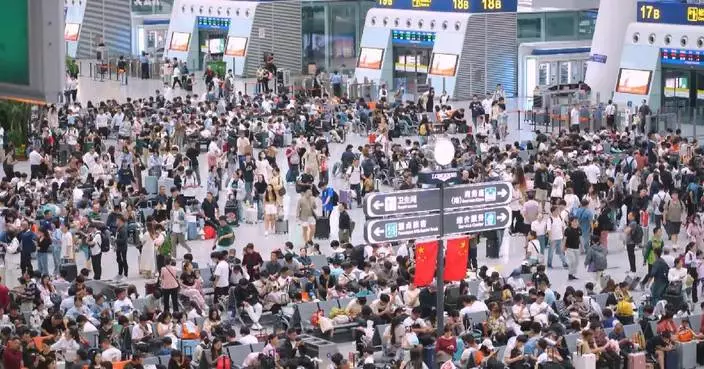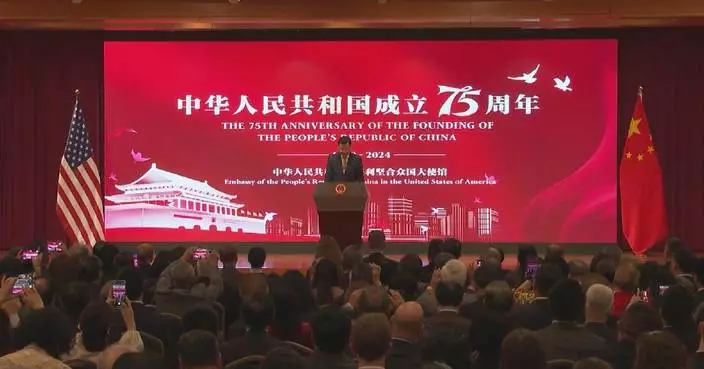China-U.S. relations are at the core position of peace in the Asia-Pacific region, and resolving issues through equal-footed dialogue will be conducive to peace and stability in the region, said experts during the ongoing World Peace Forum (WPF) held in Beijing.
Themed "Improving Global Security Governance: Justice, Unity and Cooperation," the 12th WPF, scheduled from Friday to Sunday, has attracted about 400 representatives, including former foreign political dignitaries, diplomatic envoys from various countries in China, experts, and scholars.
Experts say China is sending a positive signal to the world to push for steady and long-term growth of China-U.S. relations.
"China and the United States should reach grand bargaining because they are the most important great powers. Entire geopolitical and geoeconomic landscape will depend on their cooperation. If they get into a conflict mode, all other countries will suffer. If they cooperate, all other countries will be blessed," said Moon Chung-in, former Special Advisor to South Korean President for Foreign Affairs and National Security.
When speaking of the Taiwan question, Sujan R. Chinoy, Director General of the Manohar Parrikar Institute for Defense Studies and Analyses in India, said cross-Strait peace and stability is very important to the development of the Asia-Pacific region, and U.S. intervention brings no good to it.
"If it were to enter the fray, there is very little doubt in my mind that Japan and some of the other allies of the United States will also get engulfed in any kind of conflict. This would be a disaster for the entire region. It would be a disaster, economically speaking, for all of us. So I think we should work towards keeping the peace in this region," Chinoy said.
"India has taken the route advocating the peaceful resolution of all outstanding dispute through dialogue and negotiations. This was quite in evidence at the G20 summit in Delhi, where with the help of all the G20 countries, including the People's Republic of China, we were able to get 100 percent consensus on the outcome document. Frankly, it required consensus by all countries," he added.

China-US ties at core position of maintaining Asia-Pacific peace: experts
Visiting boundary markers seems to have become a new trend in holiday-making on frontier regions in Northeast China's Heilongjiang Province neighboring Russia so far in the week-long National Day holiday that started on October 1.
At the border gateways and boundary monuments on the 2,981-kilometer frontier in Heilongjiang, tourists from all over the country are seen stopping to have photos taken with the boundary monuments or markers, with some listening to stories told by frontier police officers about past events associated with the frontier regions.
In China, the National Day holiday is a peak travel and tourism season.
Lying in the easternmost point of China is the Wusu Town Dongji Square in Fuyuan City of Heilongjiang Province. Next to the huge sculpture bearing the Chinese character of "East" in the square, the five-star Chinese national flag is fluttering in the wind. Just beside the national flag is a boundary monument, which has become an attraction to visitors.
Many of the visitors say that having a picture taken with the boundary monument on the occasion of the National Day holiday would make them feel honored about happy powerful their motherland is.
Li Xin, a police officer with the Wusu Town Border Police Station on duty at the Dongji Square, said he has felt the enthusiasm of visitors.
Li said that the number of tourists visiting the Doingji Square so far in the National Day holiday has doubled compared to the same period of last year.
In Mohe, the northernmost city in China which is more than 2,000 kilometers away from Dongji, visitors are also seen flocking to the Beiji (North Pole) Village to have pictures taken with the local boundary marker.
Zhang Jiale, a police officer with the Arctic Border Police Station in Mohe, expressed the same feeling as Li Xin.
In Suifenhe, another frontier city in Heilongjiang, tourists also seen enthusiastically flocking to the boundary monument beside the third-generation border gateway to have pictures taken with it. The Suifenhe Gateway Scenic Spot is located at the zero point of Suifenhe Highway Port G10 Suiman Expressway, the largest land port to Russia in Heilongjiang Province. It is the only longitudinal cross-border scenic spot in China and the only one that integrates three generations of border gateways in China's gateway scenic spots.
In this scenic spot, tourists frequently ask Wang Jiaxing, a police officer with the Suifenhe Entry-Exit Border Checkpoint on duty, to help take photos or ask about how to make a tourist travel to the neighboring country.
Ke Zunlei, a tourist from Shanghai, visited the site with his wife and young daughter.
"Standing at a frontier region of my own country, I feel that this place is quite sacred," Ke said.
In Hutou Township of Jixi City in the province, the boundary marker "292-1-2014," which marks the starting point of the Wusuli River between China and Russia, also attracts many visitors to make a visit and take photos.

Visiting boundary markers becomes new trend in China's National Day holiday travel










